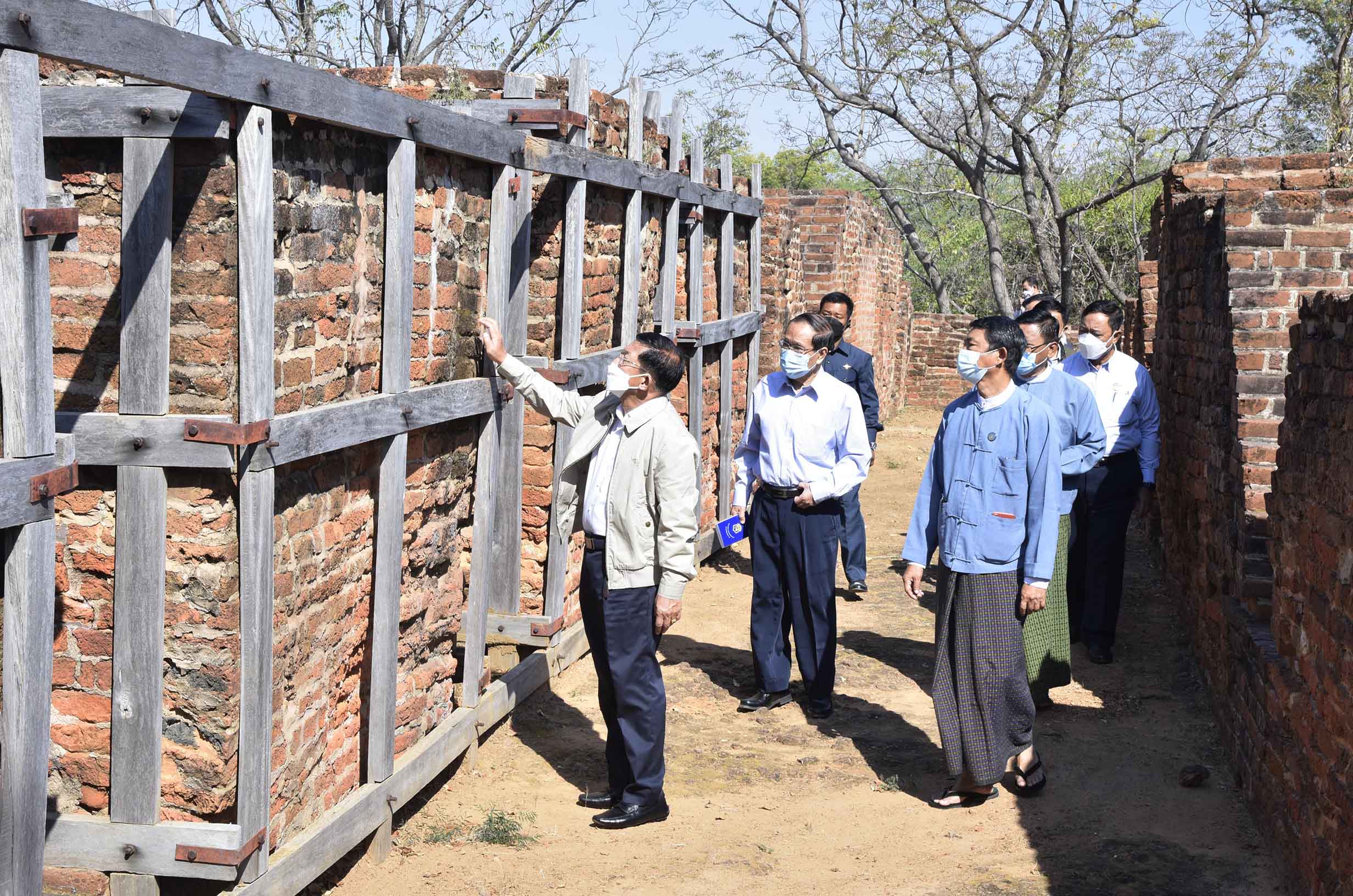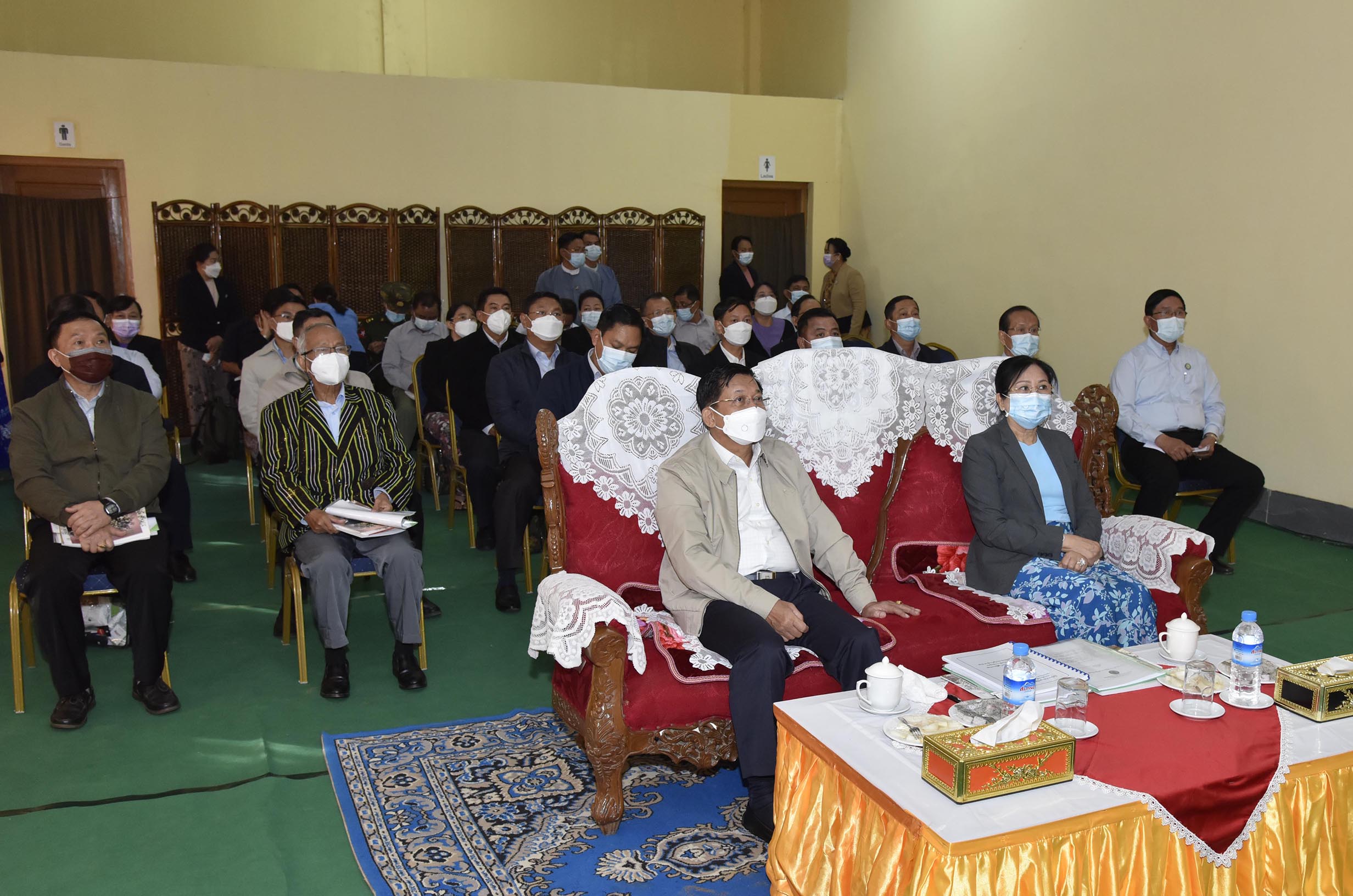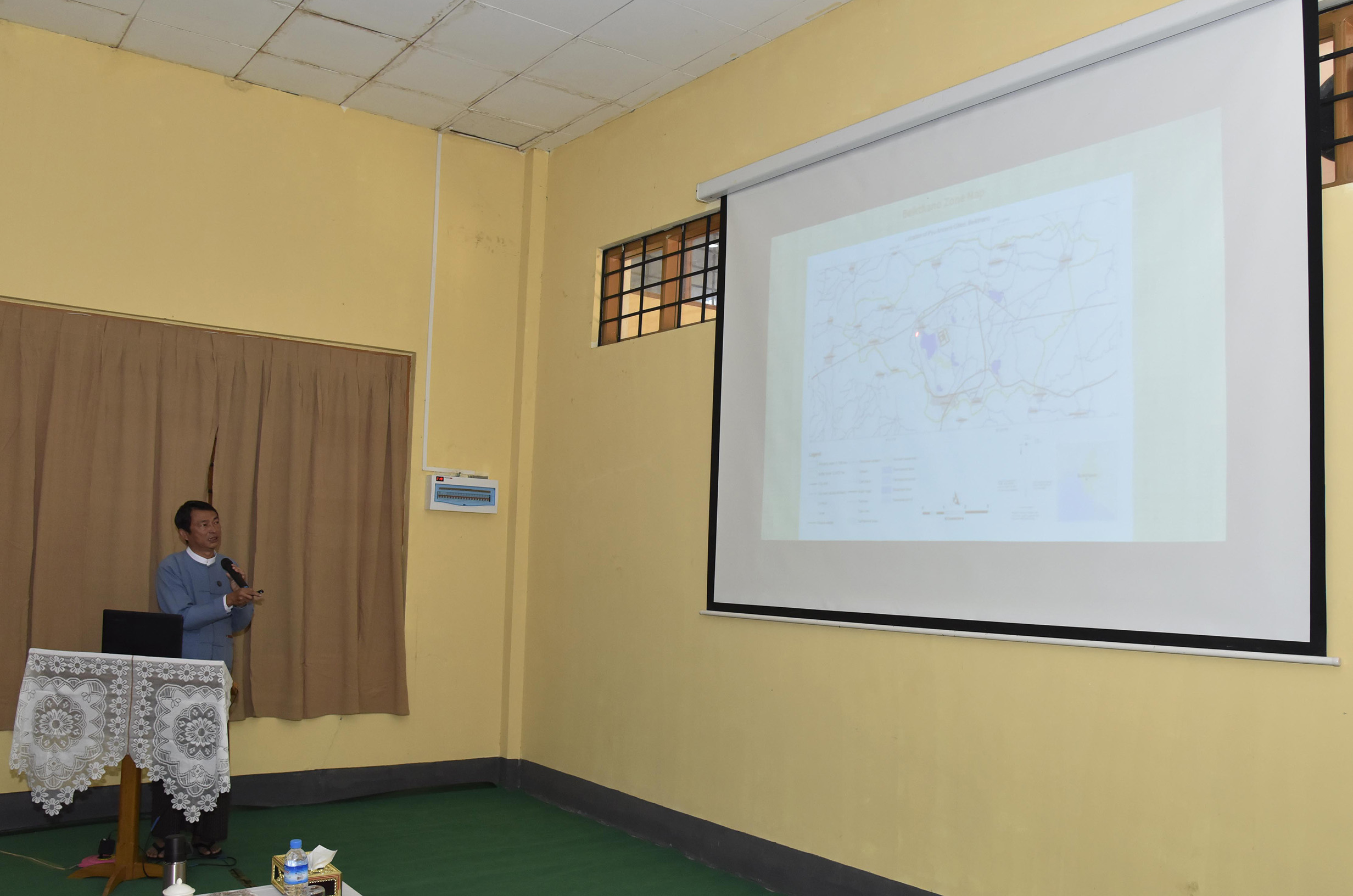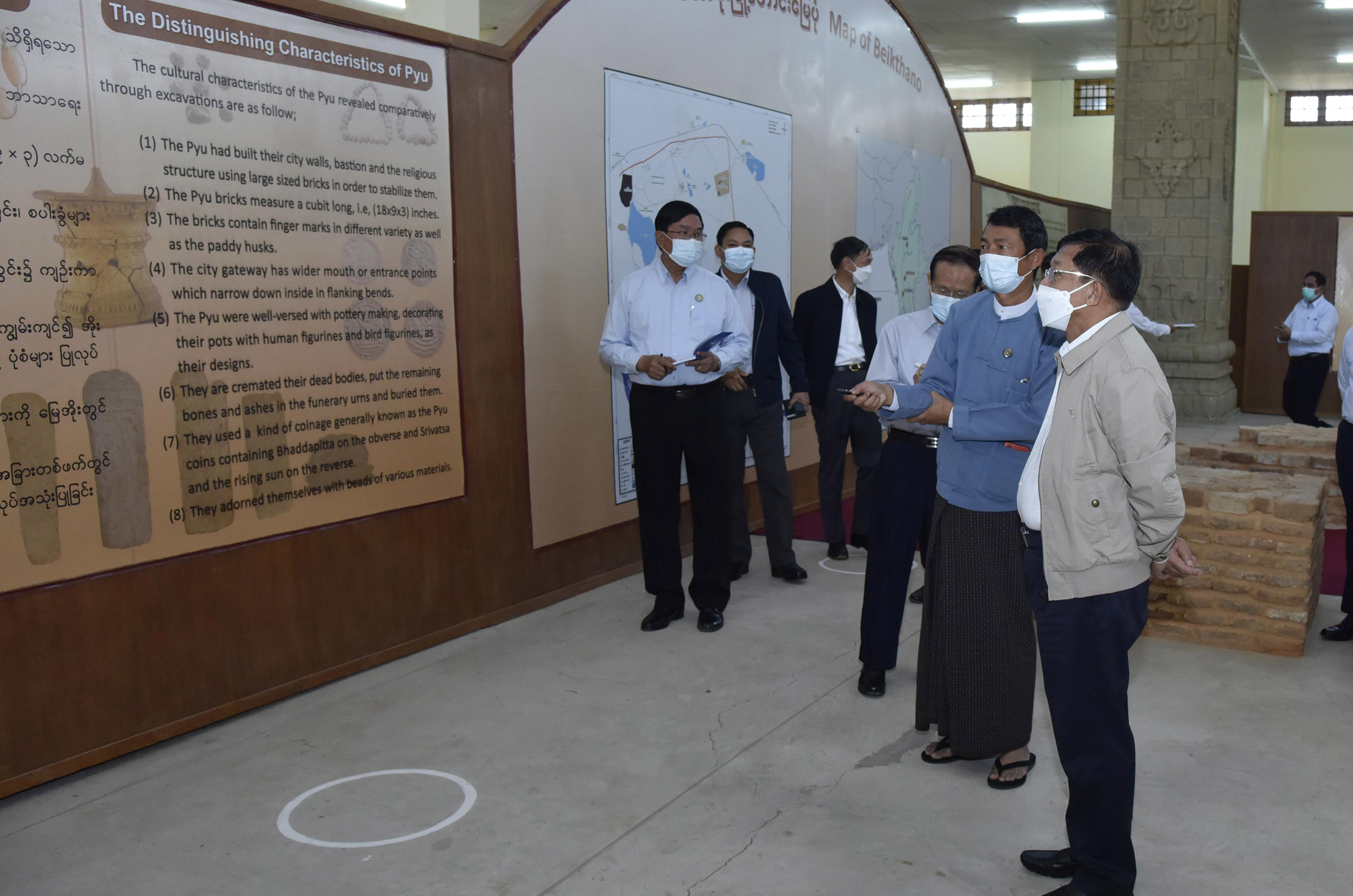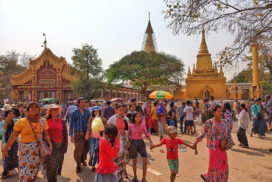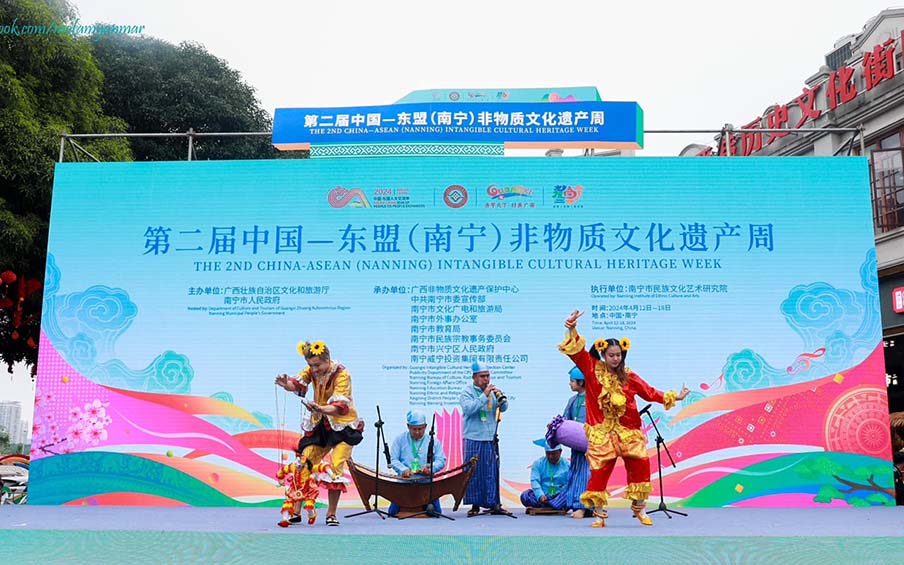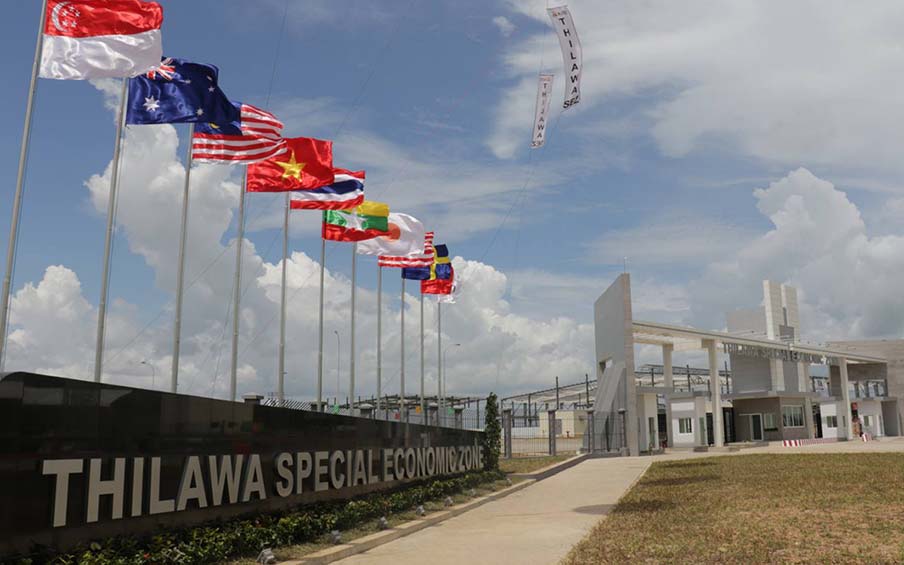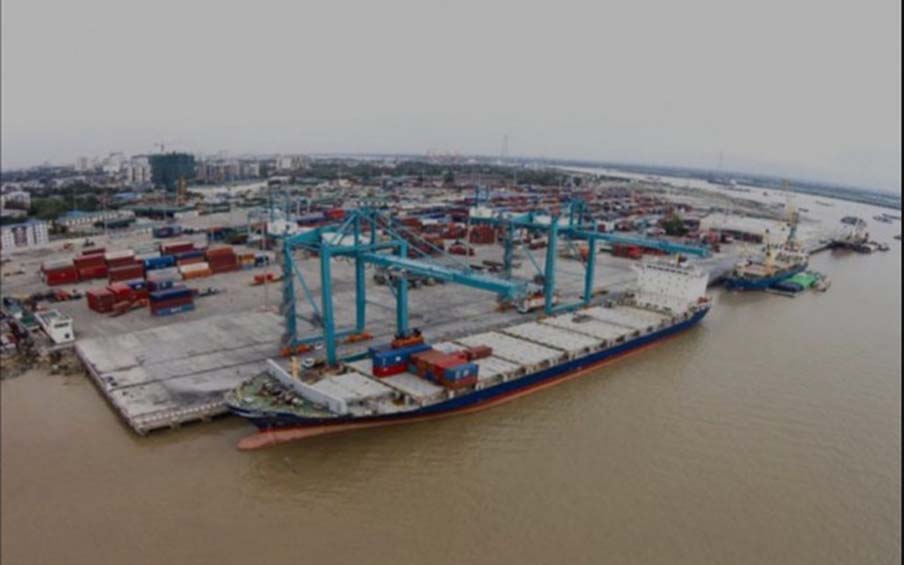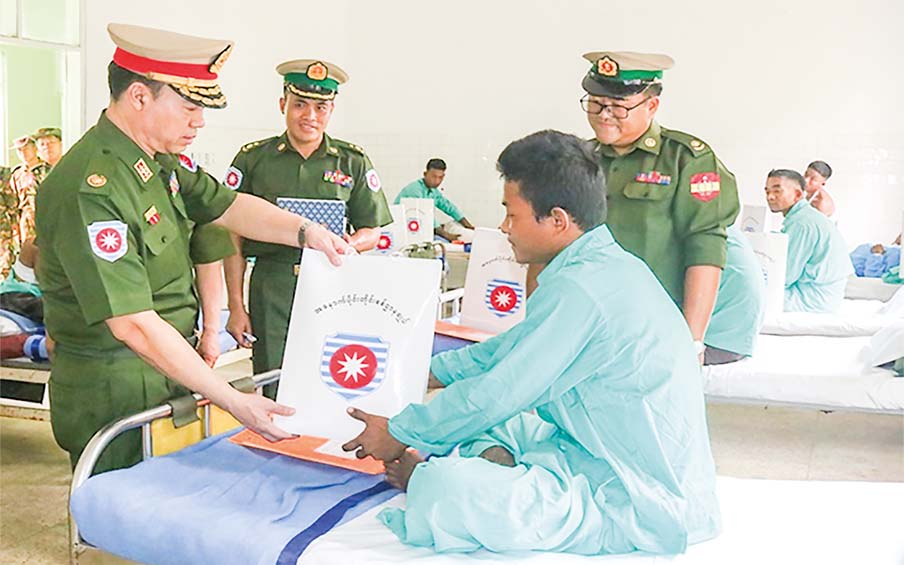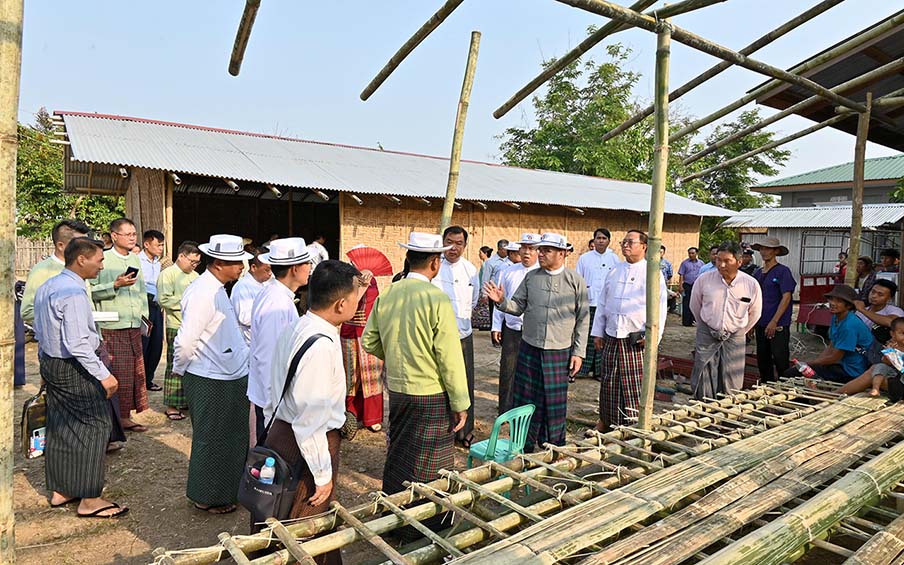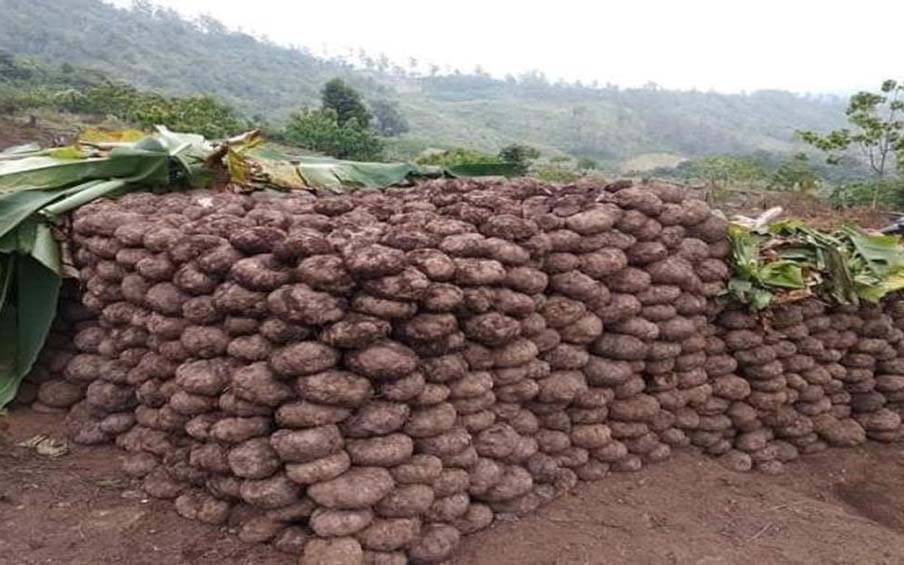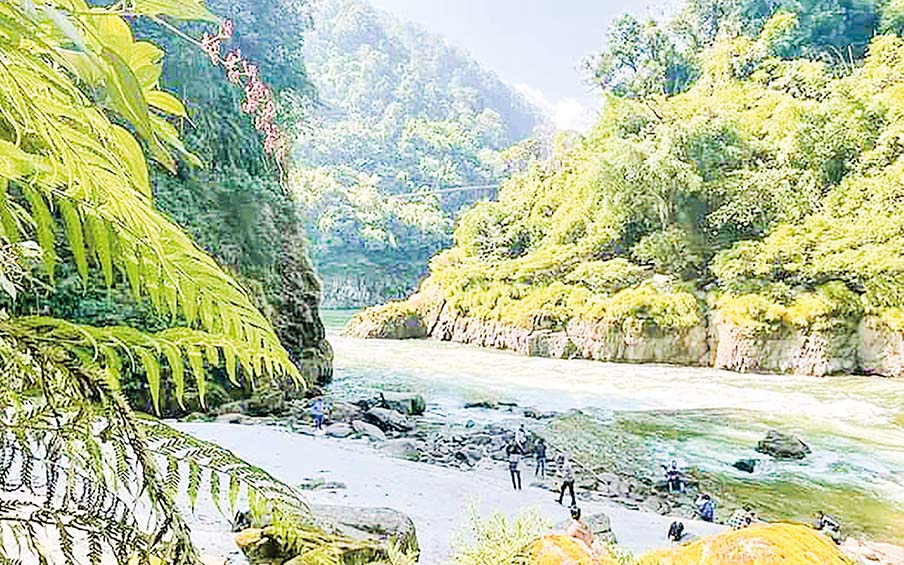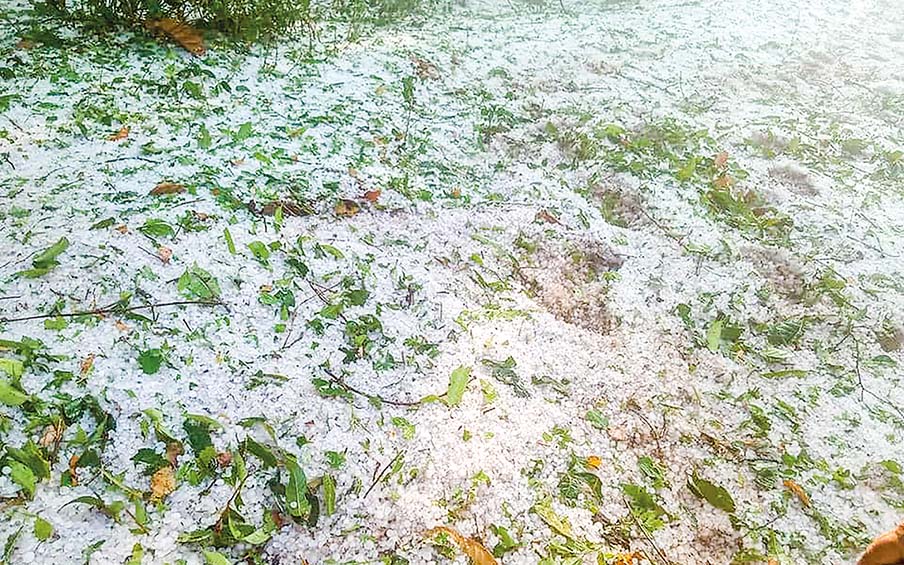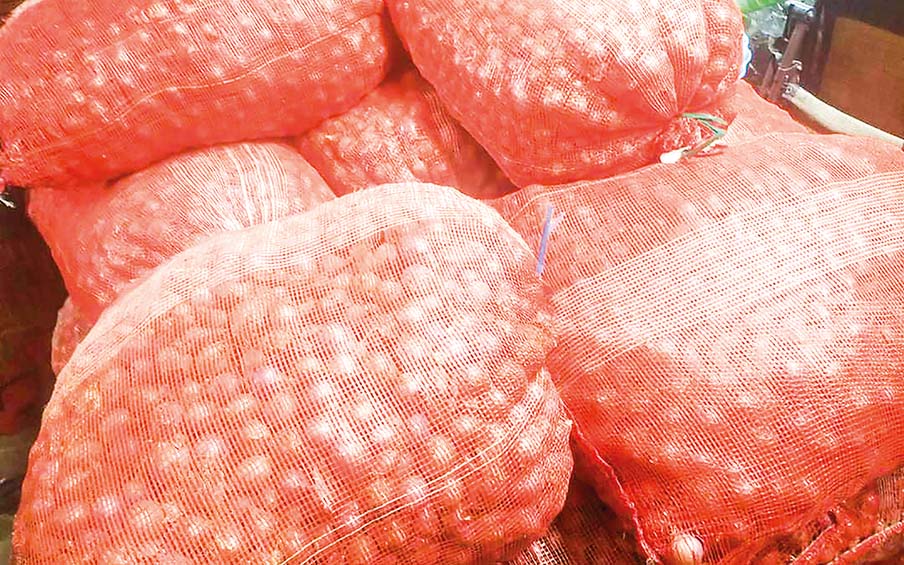Only when people know the history will they understand the culture and adore the country, so it is necessary to maintain historical heritages for long term existence in generations, said Chairman of the State Administration Council Prime Minister Senior General Min Aung Hlaing in visiting ancient Beikthanoe city of the World Heritage Site in Taungdwingyi Township of Magway Region.
At the Beikthanoe Archaeological Museum, Director-General U Kyaw Oo Lwin of the Department of Archaeology and National Museum reported on brief histories of ancient Pyu city-states Hanlin, Beikthanoe and Sri Kestra put on the World Heritage List, the progress of excavation, submission of the dossier to seek the recognition of the World Heritage in line with three points of global standards, designation of these areas as the World Heritage Sites in the 38th session of the World Heritage Committee, and maintenance tasks of the department for the ancient cultural works. Dr Nanda Hmun, permanent secretary and director-general of the Historical Research Department (Retd) reported on the maintenance of ancient cultural works, buildings and sites, and efforts for seeking the recognition of three Pyu city-states as the World Heritage Sites.
After hearing the reports, the Senior General said as ancient Pyu states included on the list of World Heritage sites are invaluable, it is necessary to systematically maintain the ancient cultural heritage sites and environs. The walls and ancient heritage works underground may face damaged, excavation for them must be undertaken in time. As the government will provide necessary assistance, further excavation and maintenance of ancient Hanlin, Beikthanoe and Sri Kestra cities must go on. Exposing the ancient cultural heritages will reflect measures of valuing the State, strengthening the nationalistic spirit and adoring the ancient cultural heritage. As these ancient cities are symbols of the Magway Region as well as the country, maintenance of the world cultural heritage will help develop the region.
The civilization of Pyu cities was the earliest in Southeast Asia, and cultural evidence of these cities are located in China and other countries. The Senior General recounted that when he visited Thotlakonda Buddhist Complex on the Bheemunipatnam Hill in India, he found ancient cultural works and silver coins similar to that of ancient Pyu cities, and the buildings similar to the religious buildings excavated in ancient Beikthanoe city. Only when people know the history will they understand the culture and adore the country, so it is necessary to maintain historical heritage for long term existence in generations. It is necessary to insert knowledge related to ancient cultural historical heritage at basic education schools and universities.
In response to the reports of U Kyaw Oo Lwin and Dr Nanda Hmun, discussions highlighted that archaeological works must be based on archaeological, geological and geographical perspectives. The civilization process of Myanmar started as of BC 3rd and 2nd centuries. It is necessary to expose the grandeur of the State and high cultural standards from then onward for displaying the various kinds of ancient objects. Efforts must be made to attract local and foreign visitors.
The Senior General wife and party then viewed the ancient Beikthanoe city map, the entrance to the city and walls, ancient objects, literary evidence, Pyu bricks, royal architectural works and Pyu utensils on respective booths. After hearing the clarifications of officials, the Senior General instructed them to place the captions on dates for the documentary photos which must be quality and panoramic and locations for excavated sites and arrange for observers to closely view the ancient coins and jewellery ornaments.
The Senior General, wife and party viewed around the building with the KKG-2 monastery-designed foundation, KKG-3 pagoda-designed building, KKG-4 religious monument, BTO-1, BTO-2, BTO-3, BTO-4 and BTO-5 inner and outer walls of the place at the royal palace in the area of ancient Beikthanoe City and left instructions on the systematic erection of the directions for looking the ways and ancient buildings, and needs for systematic maintenance.
Ancient Beikthanoe City is located 12 miles west of Taungdwingyi in Taungdwingyi Township of Magway Region. The fertile cultivable city is surrounded by Yin Creek and Saton Creek in the north, TaungU Creek and Yanpei Creek in the south. The city was established relying on the fertile area and Taungdwingyi plain from 1st Century AD and 5th Century AD. The Myanmar Archaeology Department conducted observation there in 1905. A total of 25 ancient mounds were excavated for research from 1959 to 1962. A total of 41 further mounds were unearthed from 1995 to 2015. So far, research has been conducted on 66 mounds. Depending on Kokkokhwa Village, the mounds of the city were named KKG. As of 1995, the mounds were renamed as BTO in short sign. At present, the ancient Pyu cities are under maintenance in line with the policies of the Ministry of Religious Affairs and Culture. —MNA

